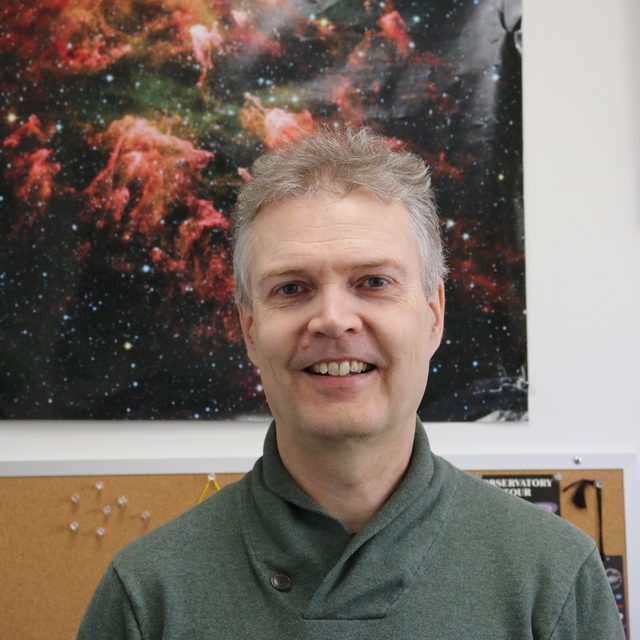February
2015
•
2015MNRAS.447..506C
Authors
•
Cheung, Edmond
•
Trump, Jonathan R.
•
Athanassoula, E.
•
Bamford, Steven P.
•
Bell, Eric F.
•
Bosma, A.
•
Cardamone, Carolin N.
•
Casteels, Kevin R. V.
•
Faber, S. M.
•
Fang, Jerome J.
•
Fortson, Lucy F.
•
Kocevski, Dale D.
•
Koo, David C.
•
Laine, Seppo
•
Lintott, Chris
•
Masters, Karen L.
•
Melvin, Thomas
•
Nichol, Robert C.
•
Schawinski, Kevin
•
Simmons, Brooke
•
Smethurst, Rebecca
•
Willett, Kyle W.
Abstract
•
We present a new study investigating whether active galactic nuclei (AGN) beyond the local universe are preferentially fed via large-scale bars. Our investigation combines data from Chandra and Galaxy Zoo: Hubble (GZH) in the AEGIS (All-wavelength Extended Groth strip International Survey), COSMOS (Cosmological Evolution Survey), and (Great Observatories Origins Deep Survey-South) GOODS-S surveys to create samples of face-on, disc galaxies at 0.2 < z < 1.0. We use a novel method to robustly compare a sample of 120 AGN host galaxies, defined to have 1042 erg s-1 < LX < 1044 erg s-1, with inactive control galaxies matched in stellar mass, rest-frame colour, size, Sérsic index, and redshift. Using the GZH bar classifications of each sample, we demonstrate that AGN hosts show no statistically significant enhancement in bar fraction or average bar likelihood compared to closely-matched inactive galaxies. In detail, we find that the AGN bar fraction cannot be enhanced above the control bar fraction by more than a factor of 2, at 99.7 per cent confidence. We similarly find no significant difference in the AGN fraction among barred and non-barred galaxies. Thus we find no compelling evidence that large-scale bars directly fuel AGN at 0.2 < z < 1.0. This result, coupled with previous results at z = 0, implies that moderate-luminosity AGN have not been preferentially fed by large-scale bars since z = 1. Furthermore, given the low bar fractions at z > 1, our findings suggest that large-scale bars have likely never directly been a dominant fuelling mechanism for supermassive black hole growth.
Links




